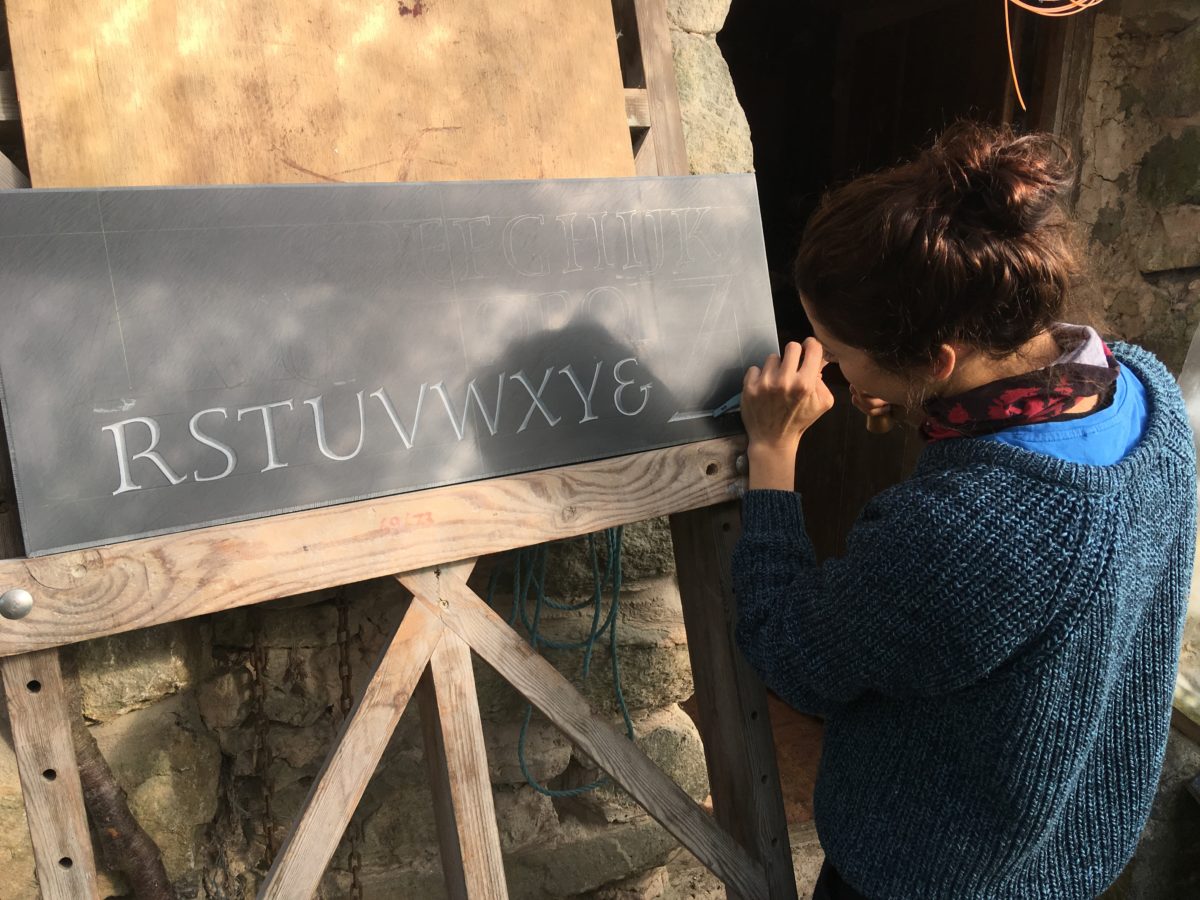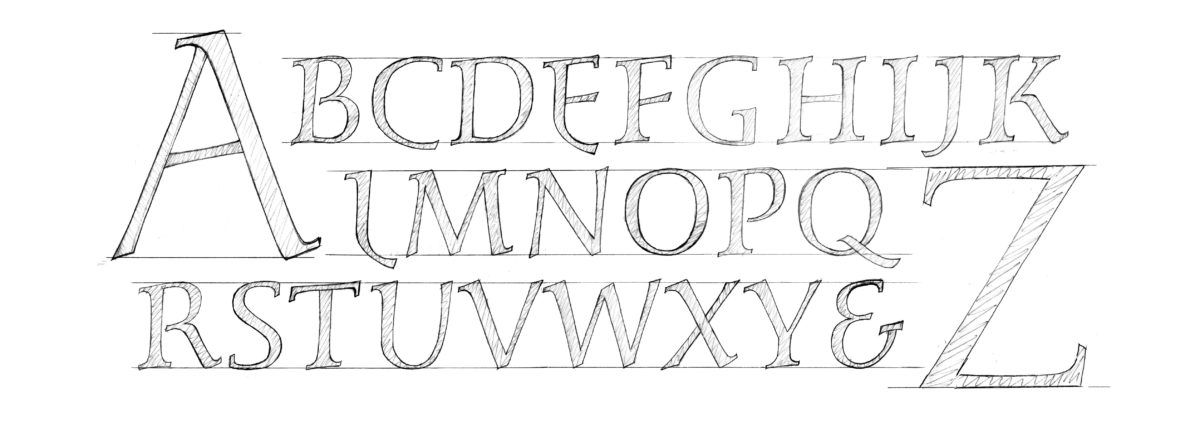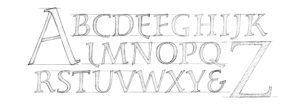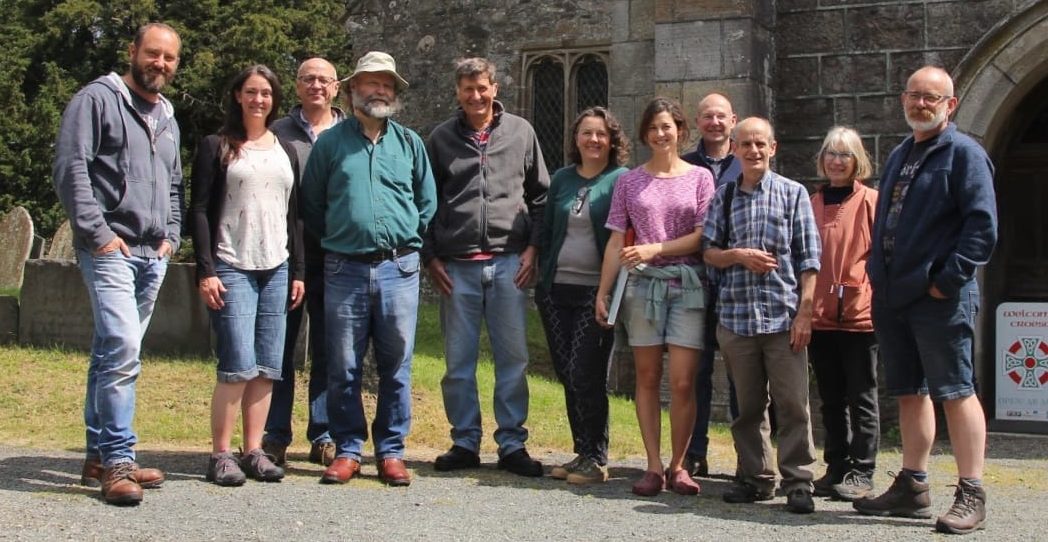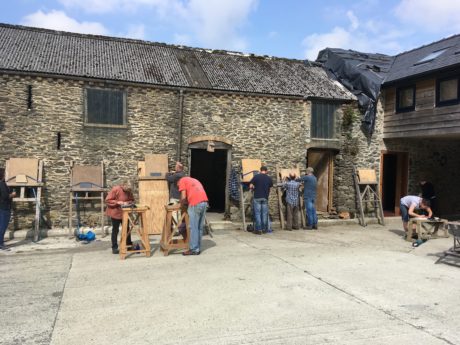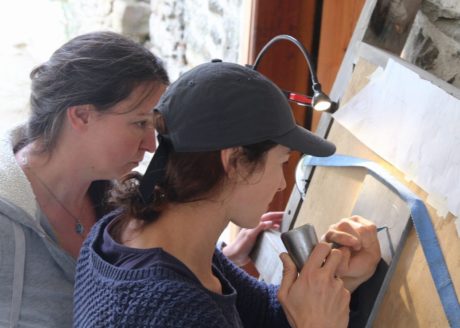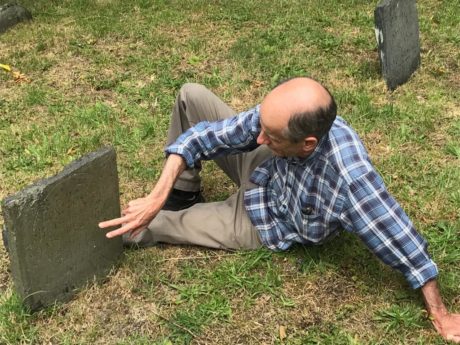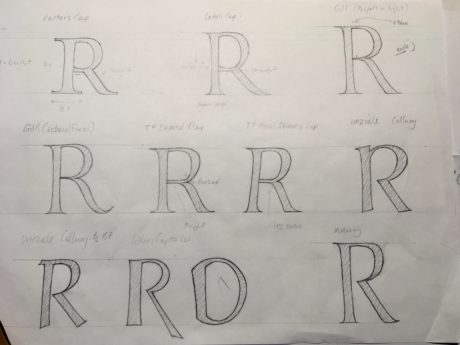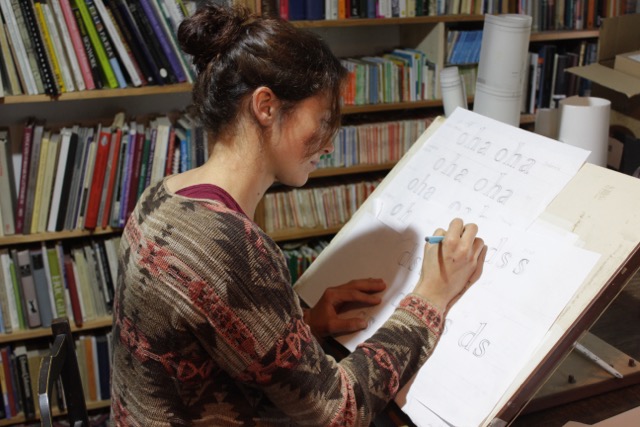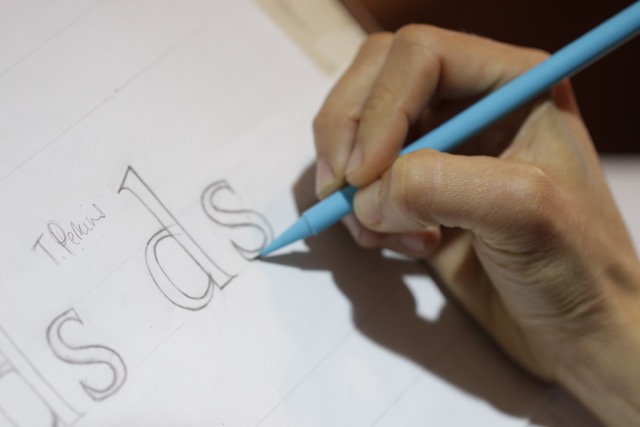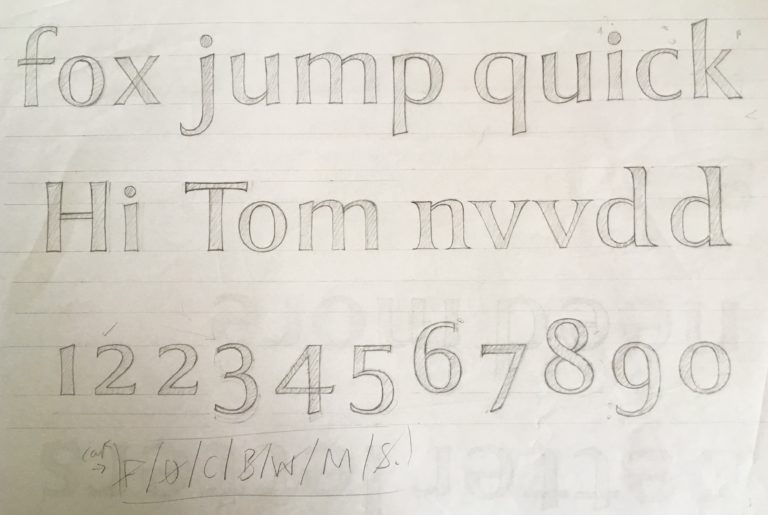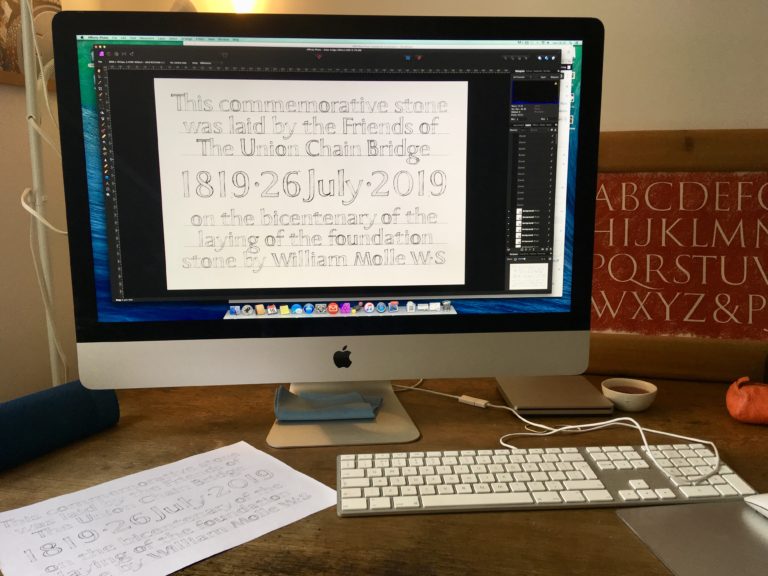Once I was happy with the layout John showed me how to reverse the image on the computer. This was in order to print the layout and transfer it directly on the surface of the slate using cellulose thinners, a trick that can save hours of tracing!
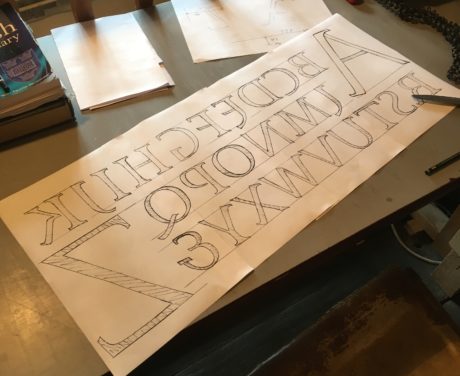
By painting the surface of the slate with the thinners the reverse print is then pressed onto the slate using a printing roller. This took a bit of practice to get the right amount of thinners and pressure from the roller and I am yet to have practiced on sandstone to see if the technique is suitable for a more porous stone.


Once the layout was transferred (..in a matter of minutes!) I started carving. This is probably where I feel most comfortable and at ease. I started the journeyman scheme knowing that my weakest side was the drawing and design element (arguably the most important!) and so it has been this that John and I have been focussing on during my 8 week placement. Having said that, it felt great to finally get a chisel and carve! so I really enjoyed these couple of days. The stone was a spare piece of Chinese slate that John had in his workshop so that was interesting as not a stone I had ever encountered before. It was extremely layered and very hard so it was difficult to get a consistant 90′ angle on the v cut but because of the hardness it did produce a lovely clean, sharp edge.
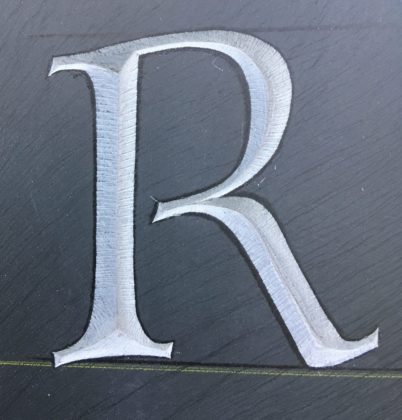

I haven’t taken a photo of the finished alphabet yet as it is still waiting to be mounted onto the wall in the workshop. Michelle and I have a lot of lettering pieces, including drawings, on the walls of our workshop as we have found it so useful to show clients the various lettering styles and types of stones .I will hopefully add a final photo of the alphabet this week….

